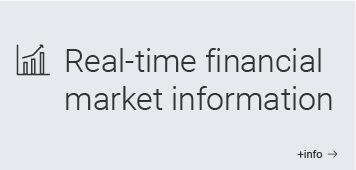Journal Ensayos Sobre Política Económica (ESPE) – Macroeconomic Impact of Climate Change in Colombia
Cuando nos lea, tenga siempre presente que el contenido de nuestros artículos, así como los análisis y conclusiones que de ellos se derivan, son exclusiva responsabilidad de sus autores. El material divulgado en nuestra revista ESPE no compromete ni representa la opinión del Banco de la República ni la de su Junta Directiva.
In the journal Ensayos sobre Política Económica - ESPE we disclose the results and policy proposals emerging from academic research carried out at Banco de la República (the Central Bank of Colombia). When reading us, always keep in mind that the content of our articles, the analyses, and the conclusions derived from them are the sole responsibility of their authors. The material published in our ESPE Journal does not compromise or represent the opinion of Banco de la República or its Board of Directors.
Approach
This paper reviews the literature on the expected macroeconomic effects of the physical and transition risks of climate change, identifying the main strengths, weaknesses, and gaps. This review aims to contextualize climate change’s potential impact in Colombia in the coming decades and reflect on the challenges it poses for managing various areas of economic policy.
First, the transmission mechanisms of climate-related risks (RACC in Spanish) and their expected effects on economic activity are reviewed. Then, their effects on the external sector are reviewed and projections are made for the current account balance under different climate scenarios in the long term. Next, the impact of such risks on public finance is examined, and the results of partial-equilibrium accounting assessments are presented to assess the impact of various policy alternatives on the evolution of the national government deficit and debt. Afterwards, the challenges faced by financial institutions and the results of a sensitivity analysis on credit institutions in Colombia are presented. Finally, the paper reviews how RACCs will affect the central banks’ primary objectives of price stability, their policy formulation, and their transmission mechanisms.
Contribution
This paper includes a critical review of a wide range of updated literature on the expected macroeconomic effects of RACCs. The scenario analysis methodology was used for quantitative analyses given the high level of uncertainty to which analyses of this type are exposed.
The basis for the calculations of RACCs’ impact on the economic activity in Colombia are the models of the Network for Greening the Financial System (NGFS) and possible GDP paths by 2100, consistent with three climate change scenarios: current policies, delayed transition, and zero emissions by 2050. Based on the impacts expected for Colombia by the NGFS models, the GDP paths to 2100 are calculated.
For the exercise of the RACCs’ impact on the external sector, the relationships between the current balance and its main determinants between 1996 and 2020 are first estimated. These results are combined with possible trajectories of the determinants to make a linear projection of the current balance between 2021 and 2050. Finally, an analysis is made of how the implementation of climate change mitigation measures could affect the current account deficit.
Regarding public finance, results of partial-equilibrium accounting simulations are made. These consider both the potential decrease in oil revenues and greater efforts in adaptation and mitigation expenditures against RACCs. This aims to assess the impact on the evolution of the central national government’s deficit and debt by 2050.
In terms of financial stability, a pioneering analysis is carried out in Colombia to simulate the effects on the quality risk indicator, profitability, and capital adequacy ratio of credit institutions, which would have three climate change scenarios. The exercise uses the SYSMO model of Banco de la República.
The country must consider a balanced schedule to replace oil revenues by generating new sources of external income and structural reforms on the tax and public spending aspects.
Conclusions
The estimates made on the impact of RACCs’ on the Colombian economy show possible GDP losses by 2100 of between 2.0% in a scenario where the Paris Agreement is fulfilled, and 8.0% without additional mitigation policies. The impacts are non-linear, with higher GDP losses at higher temperatures.
RACCs could cause a significant contraction of current revenues and a deterioration of the long-term current balance. The expected path shows a broadening in the deficit in the 2050 zero net emissions scenario. These calculations were based on simplified partial equilibrium and reduced-form models. Their effect could be more moderate because, in a general equilibrium context, there would be different adjustments of macroeconomic factors that would allow dampening episodes of deterioration in the current account. They include a depreciation of the real exchange rate and a cut in public spending.
Public finance would also be affected due to the decrease in oil revenues and greater efforts in expenditures compared to RACCs, with a higher impact on the fiscal deficit and the government debt under a zero-emissions scenario.
RACCs may additionally cause costs and losses for financial institutions and have implications on the system’s stability. The current policies scenario would bring the largest adverse impact on the credit institutions given the deterioration of the credit quality . The difference in the impacts among policies scenarios suggest that the Colombian financial system is less resilient to the materialization of the physical risks than the transition risk.
In the case of monetary policy, it would be harder for central banks to assess and forecast price levels and volatility, the output gap, employment, and the natural interest rate . Thus, RACCs will have implications for the price stability objectives and how they formulate their policies.
In addition, more frequent and intense weather events would affect the economy in the form of supply shocks, creating a dilemma for monetary policy management. Another implication is that lower long-term growth would likely lead to lower levels of natural interest rate, which would limit the room for countercyclical policies.
On the other hand, pressures towards higher current accounts and fiscal deficits could result in deteriorations in the country’s credit rating, restricting access to external financing, and worsening the monetary policy dilemma regarding supply shocks. The results on the financial system imply that deteriorating credit indicators may hinder the transmission of monetary policy.
In order to avoid further deterioration in the external position and public finances, the country must consider a balanced schedule to replace oil revenues by generating new sources of External income and structural reforms on the tax and public spending aspects.



















































